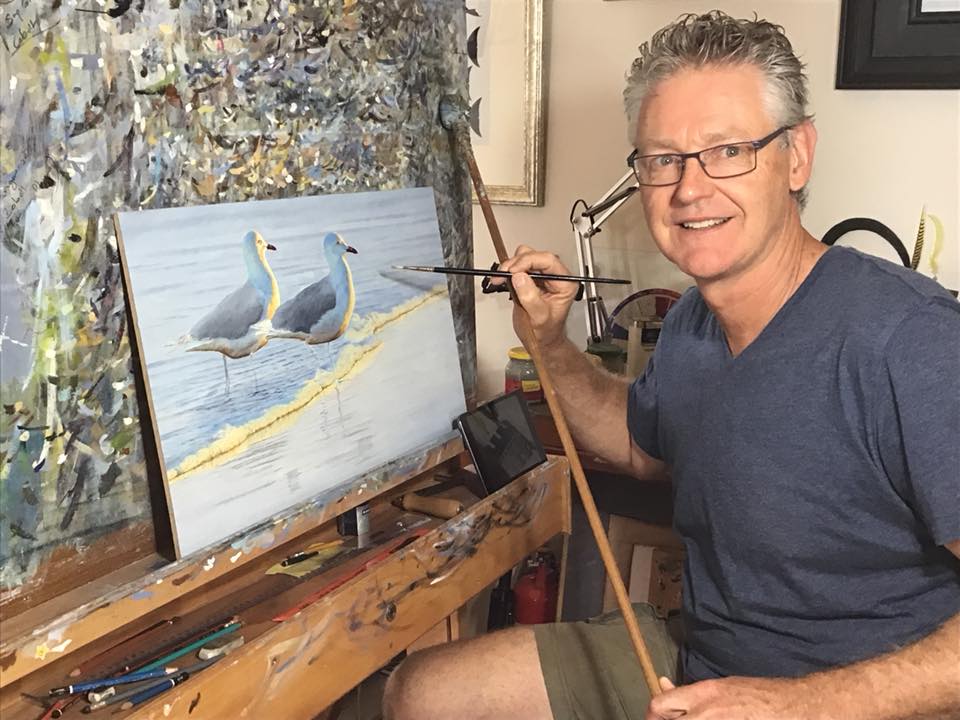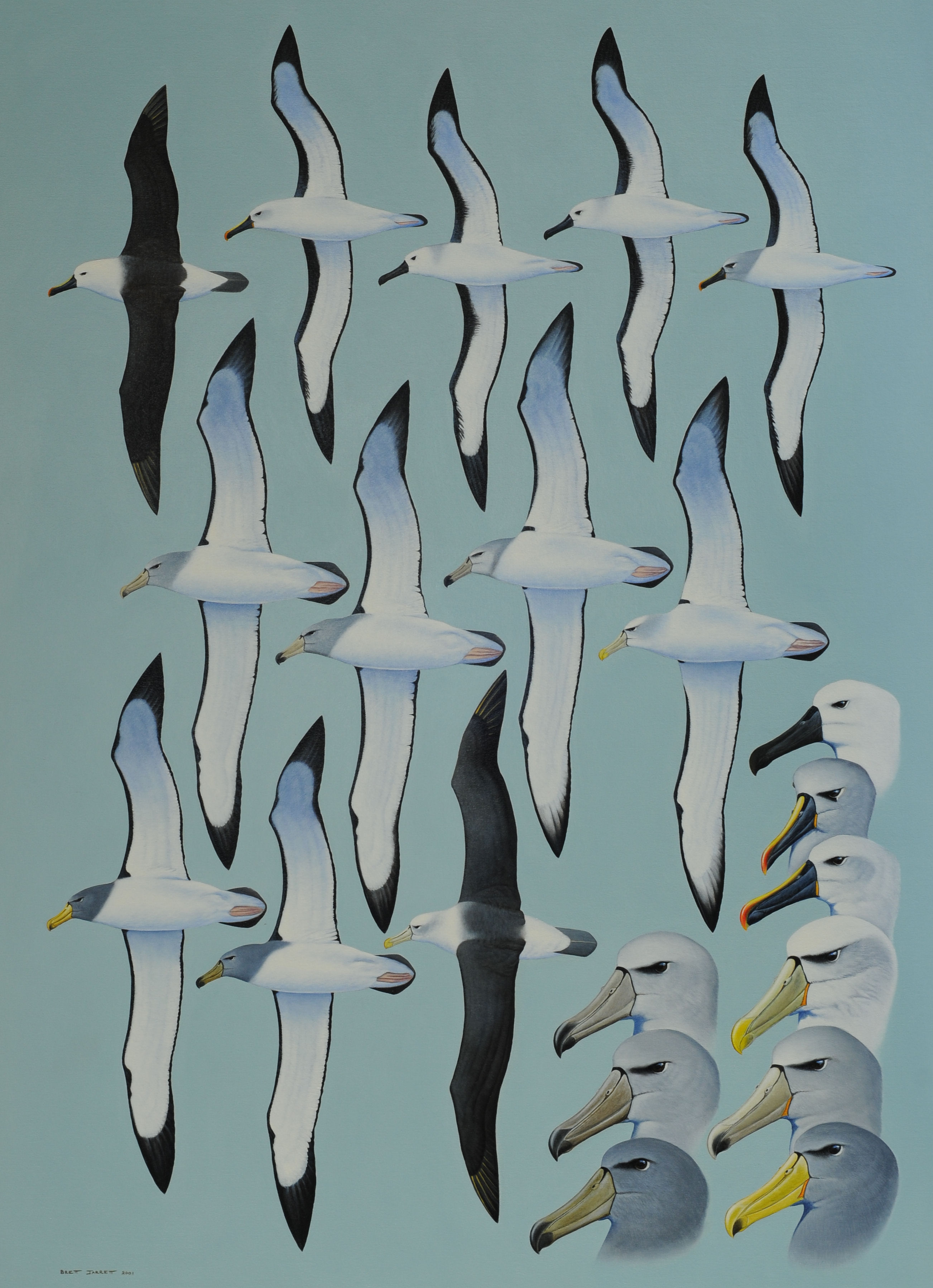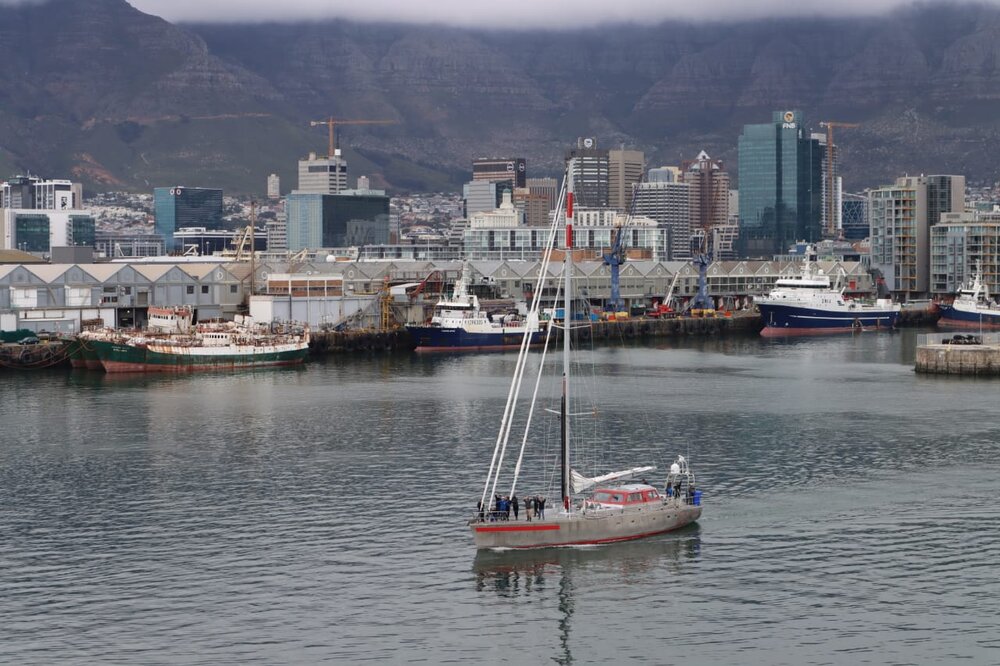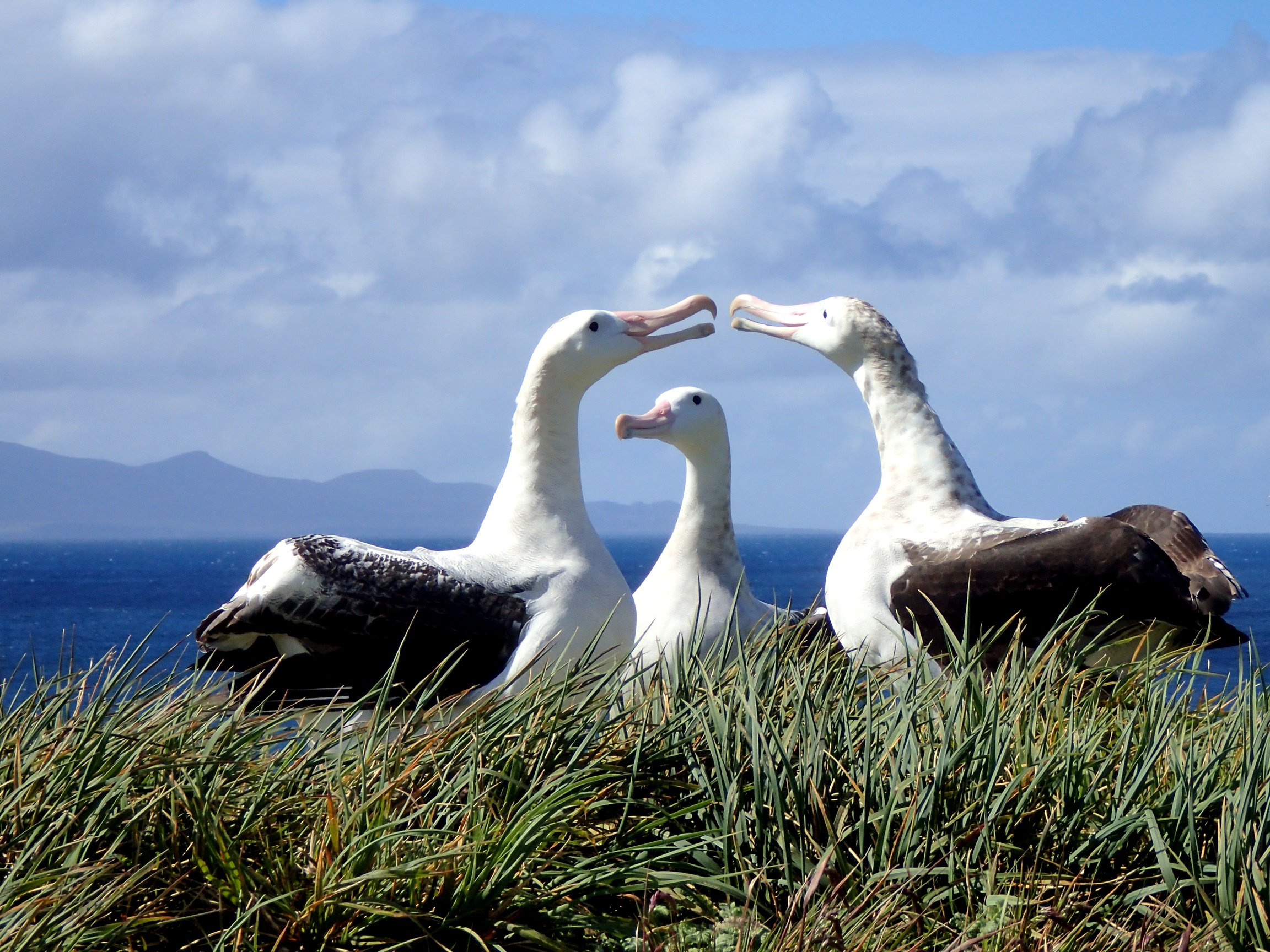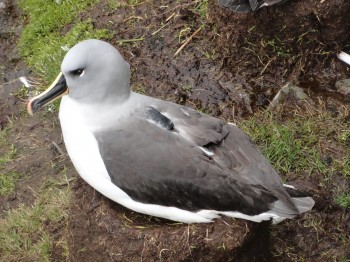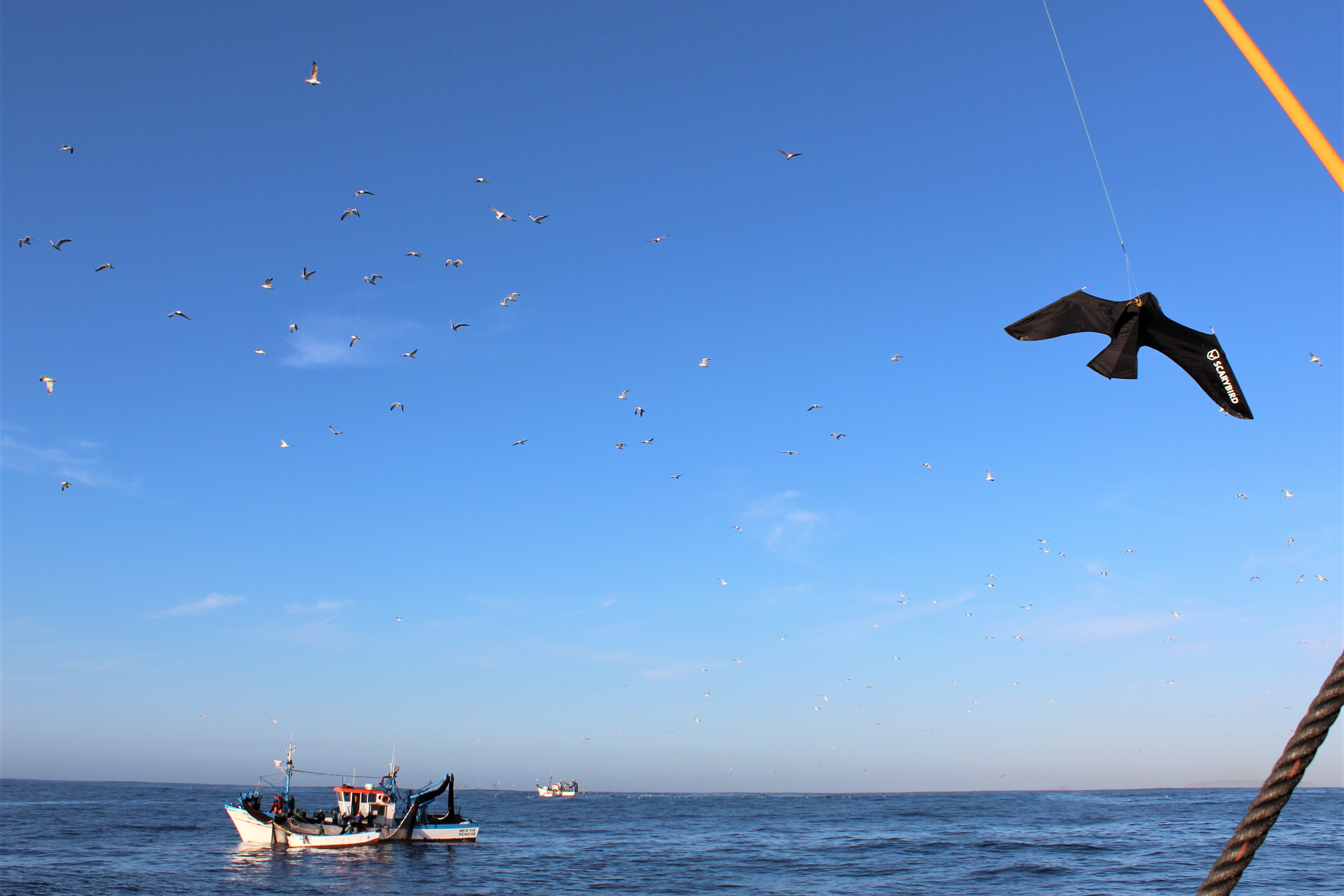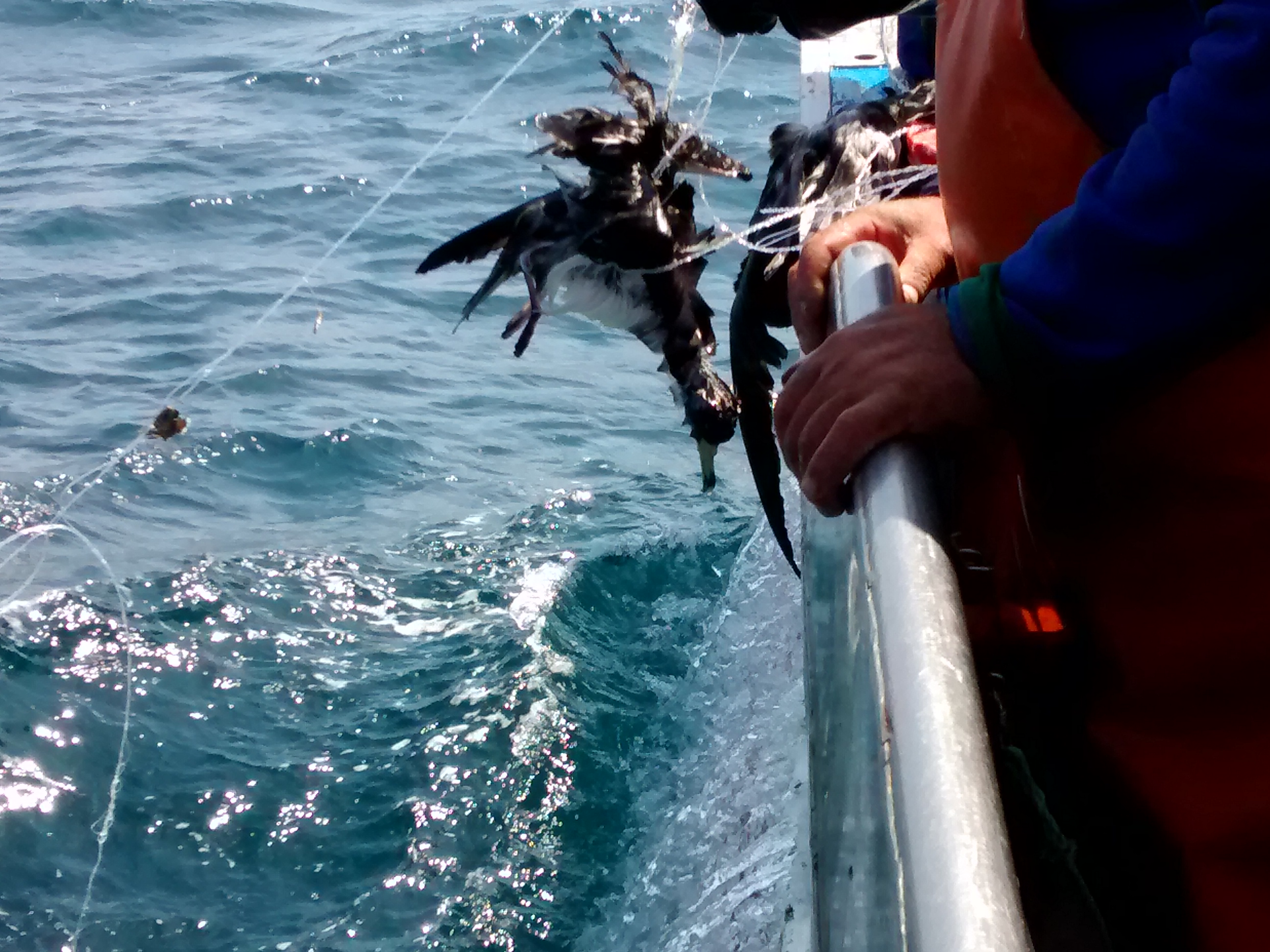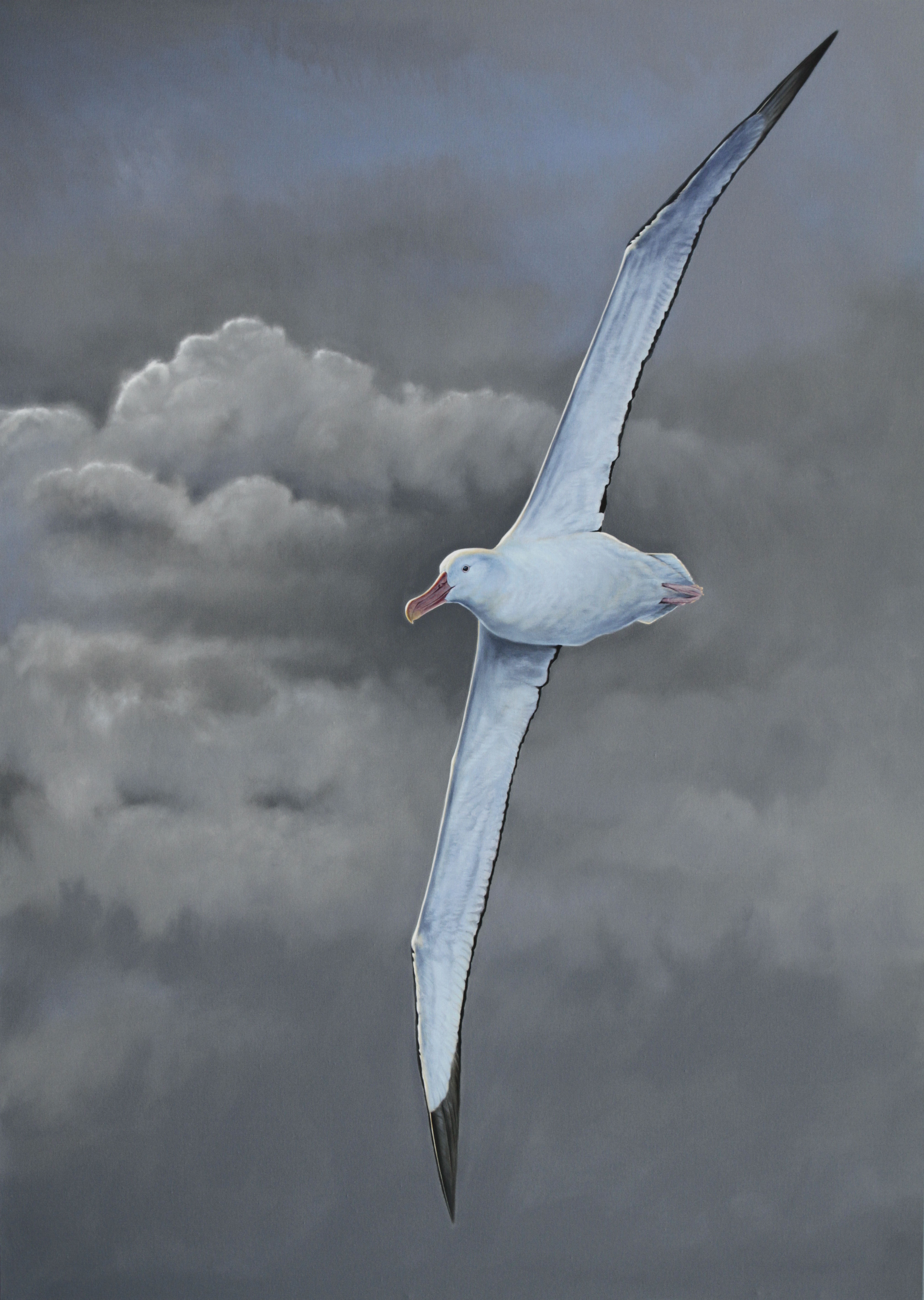
“Big birds deserve to be painted BIG and a 12-kilogram Wandering Albatross with her 3.3 metre wingspan needs a substantial canvas. Here is 'Southern Ocean Wanderer' on a 170 x 120 cm stretch canvas, painted with a building storm as a background”
Brett Jarrett is a wildlife artist and illustrator based in Narrawong, a small town in Victoria, Australia, where he paints in oils on canvas and exhibits in his own gallery ‘Bay of Whales’ – which doubles as a coffee shop. Brett's first Antarctic expedition was with the Australian Antarctic Division in 1996, working with Weddell Seals. In subsequent expeditions he has worked as an artist and wildlife guide, collectively working on and around the Antarctic Continent for nearly three years. Brett was the main artist for A Complete Guide to Antarctic Wildlife written by Hadoram Shirihai and published in 2002, with a second edition in 2007, producing all but three of the 35 full-page plates of seabirds, seals and cetaceans. With the number of images on each plate they were painted quite large, with most being 74 x 53 cm.
Brett Jarrett works on a pair of Silver Gulls in his gallery
Thalassarche mollymawks by Brett Jarret from A Complete Guide to Antarctic Wildlife
Brett has written on his website:
“Since childhood, observing the natural world and the everyday lives of animals and birds has forged a course forward that I'll never return from. The emotion of being so immersed in nature and having developed a self-taught skill that records my ideas and imagination is in itself a chance to be a voice for nature. There is something incredibly exciting about creating a piece of fine art that moves people. As with all my artwork, it is born from the initial love of a subject that ultimately leads to a field trip, whether that be a day excursion or a full-blown month-long expedition. My imagination often runs wild with all the possibilities of how these intended paintings will turn out.”
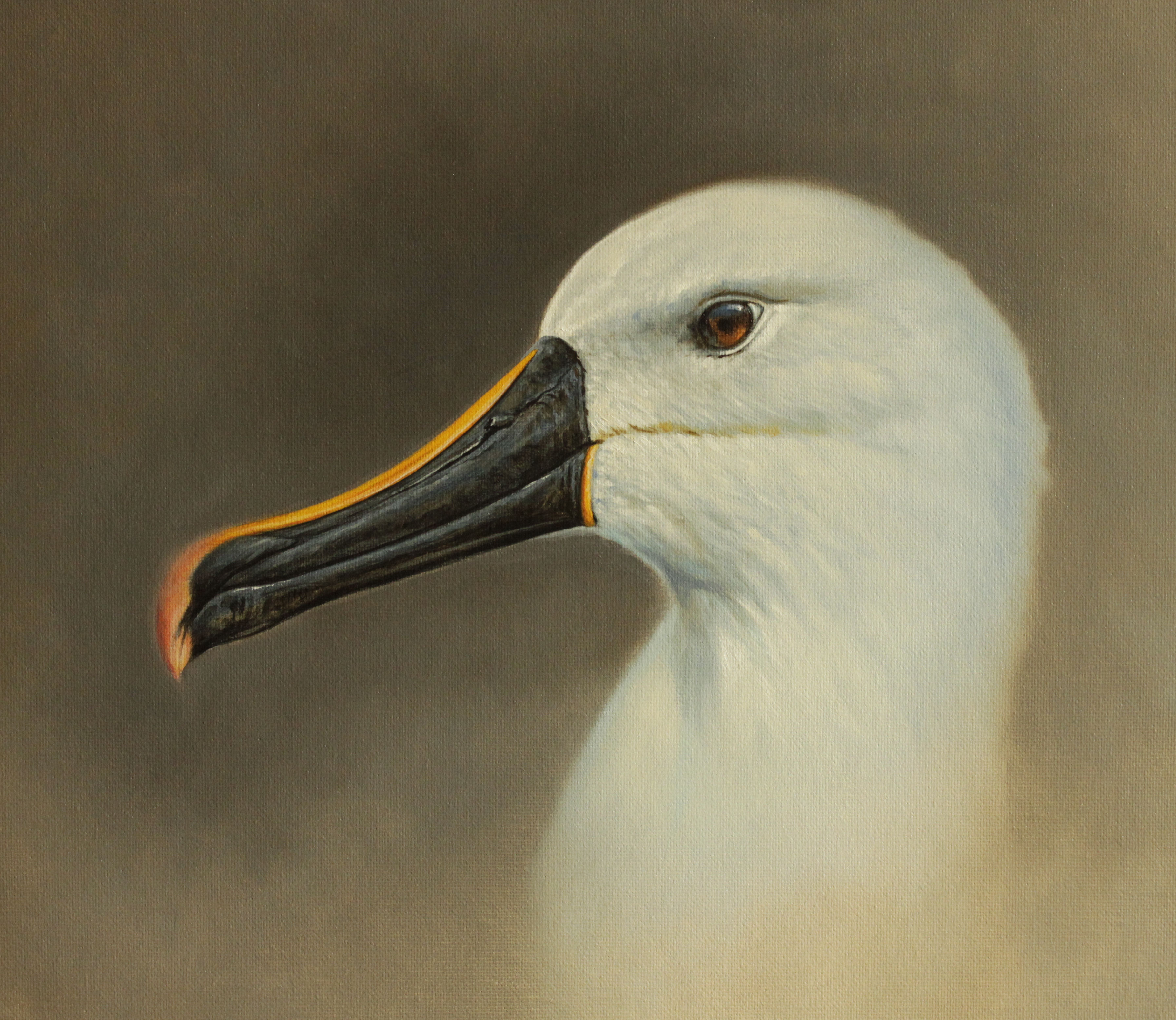
Indian Yellow-nosed Albatross by Brett Jarrett
This year Brett has been producing ‘head and shoulders’ portraits of procellariiform tubenoses, such as the Indian Yellow-nosed Albatross illustrated here. More portraits, including of several gadfly petrels can be viewed on his Facebook page. His paintings of three Antarctic tubenoses (Antarctic Fulmar, Antarctic Petrel and Snow Petrel) in this series were done from his own photographs taken on visits to the continent.
Reference:
Shirihai, Hadoram 2007. A Complete Guide to Antarctic Wildlife. The Birds and Marine Mammals of the Antarctic Continent and the Southern Ocean. Second Edition. Illustrated by Brett Jarrett with John Cox. London: A&C Black Publishers. 544 pp.
John Cooper, ACAP Information Officer, 02 October 2020

 English
English  Français
Français  Español
Español 